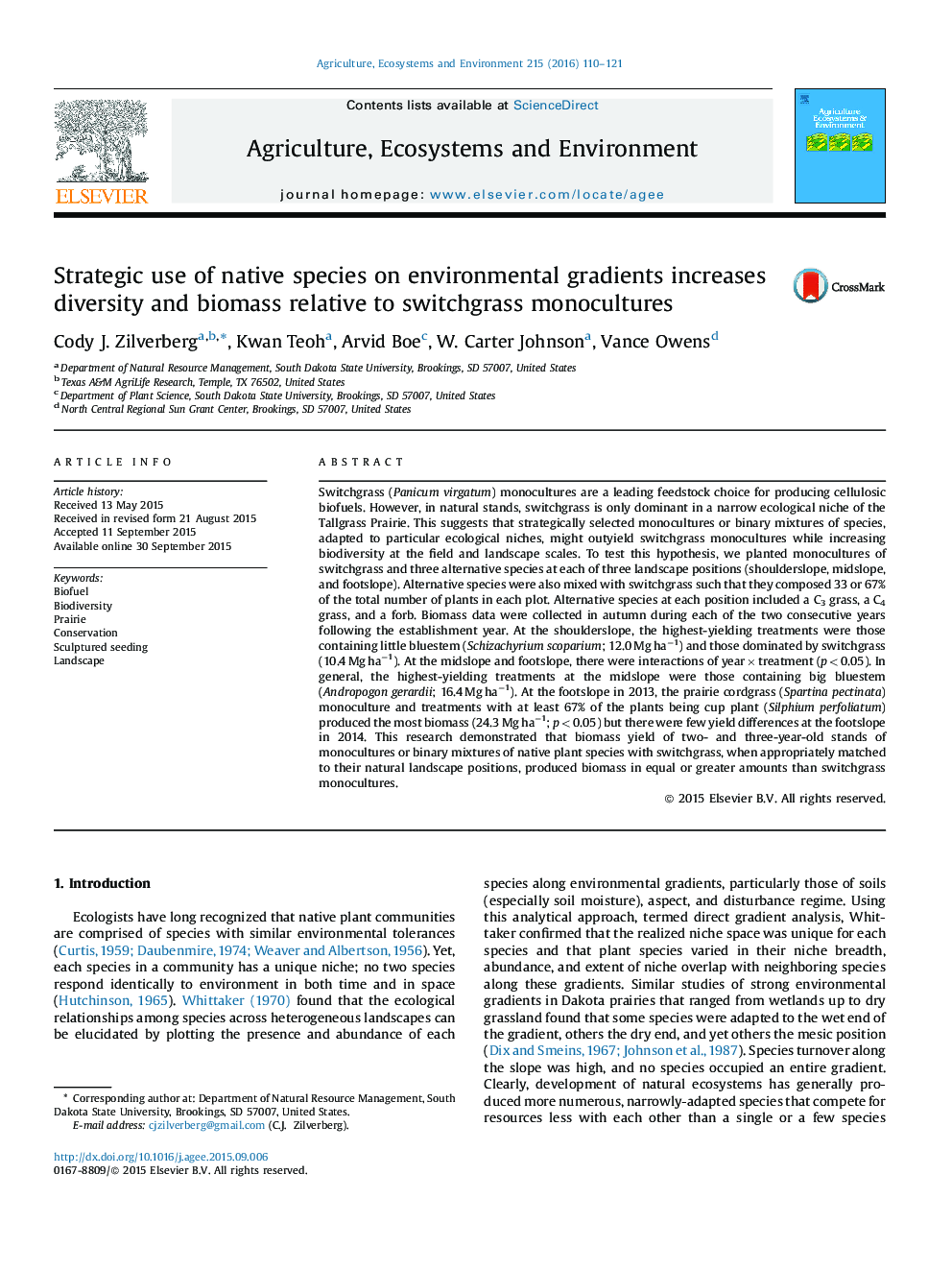| کد مقاله | کد نشریه | سال انتشار | مقاله انگلیسی | نسخه تمام متن |
|---|---|---|---|---|
| 2413694 | 1552037 | 2016 | 12 صفحه PDF | دانلود رایگان |
• We planted native perennial Tallgrass Prairie plants for biofuel feedstock.
• Adapted species were planted at the shoulderslope, midslope, and footslope.
• Multiple alternative species outyielded switchgrass at adapted landscape positions.
• Using alternative species could increase field-scale biodiversity and yield.
Switchgrass (Panicum virgatum) monocultures are a leading feedstock choice for producing cellulosic biofuels. However, in natural stands, switchgrass is only dominant in a narrow ecological niche of the Tallgrass Prairie. This suggests that strategically selected monocultures or binary mixtures of species, adapted to particular ecological niches, might outyield switchgrass monocultures while increasing biodiversity at the field and landscape scales. To test this hypothesis, we planted monocultures of switchgrass and three alternative species at each of three landscape positions (shoulderslope, midslope, and footslope). Alternative species were also mixed with switchgrass such that they composed 33 or 67% of the total number of plants in each plot. Alternative species at each position included a C3 grass, a C4 grass, and a forb. Biomass data were collected in autumn during each of the two consecutive years following the establishment year. At the shoulderslope, the highest-yielding treatments were those containing little bluestem (Schizachyrium scoparium; 12.0 Mg ha−1) and those dominated by switchgrass (10.4 Mg ha−1). At the midslope and footslope, there were interactions of year × treatment (p < 0.05). In general, the highest-yielding treatments at the midslope were those containing big bluestem (Andropogon gerardii; 16.4 Mg ha−1). At the footslope in 2013, the prairie cordgrass (Spartina pectinata) monoculture and treatments with at least 67% of the plants being cup plant (Silphium perfoliatum) produced the most biomass (24.3 Mg ha−1; p < 0.05) but there were few yield differences at the footslope in 2014. This research demonstrated that biomass yield of two- and three-year-old stands of monocultures or binary mixtures of native plant species with switchgrass, when appropriately matched to their natural landscape positions, produced biomass in equal or greater amounts than switchgrass monocultures.
Journal: Agriculture, Ecosystems & Environment - Volume 215, 1 January 2016, Pages 110–121
